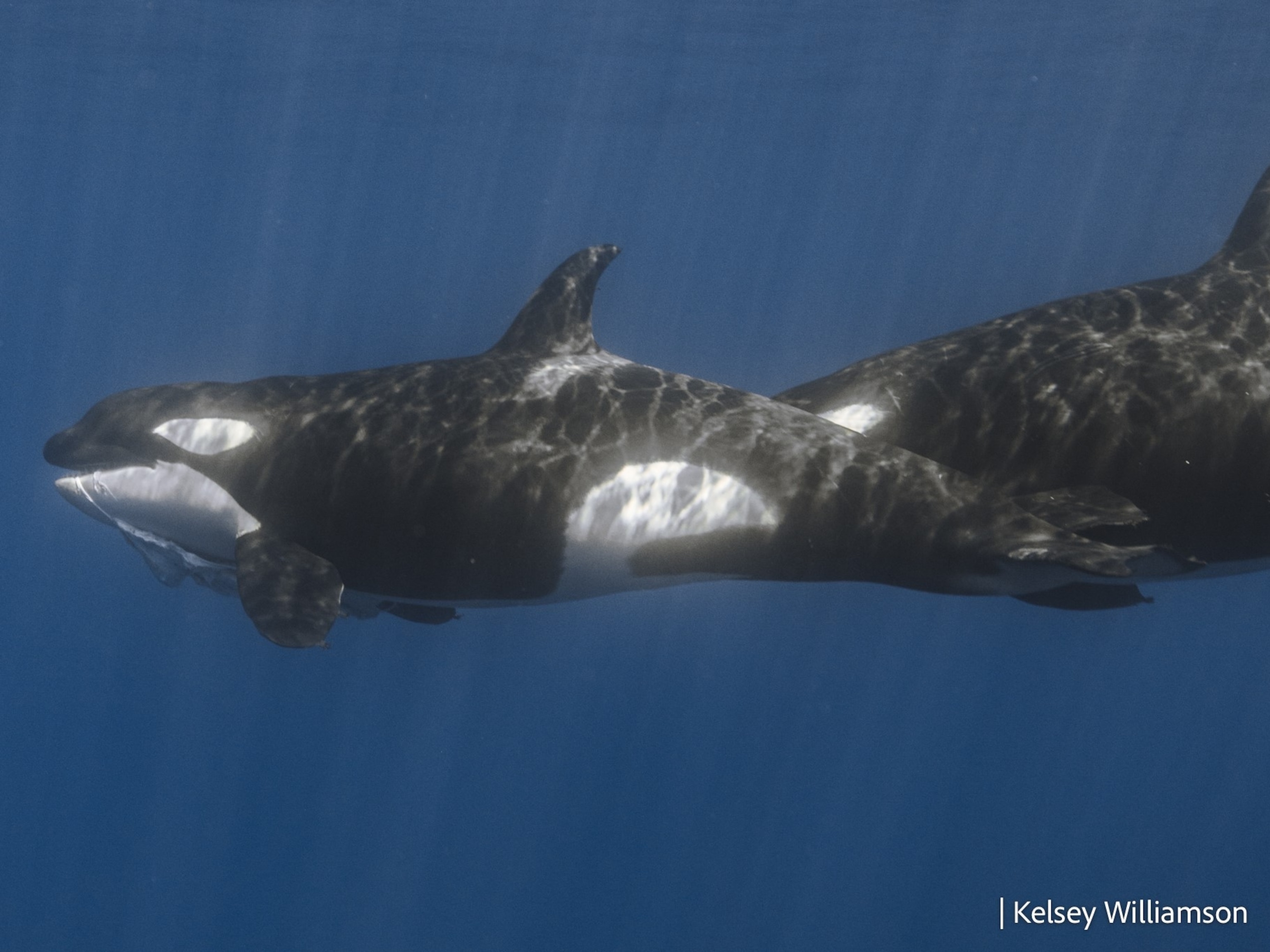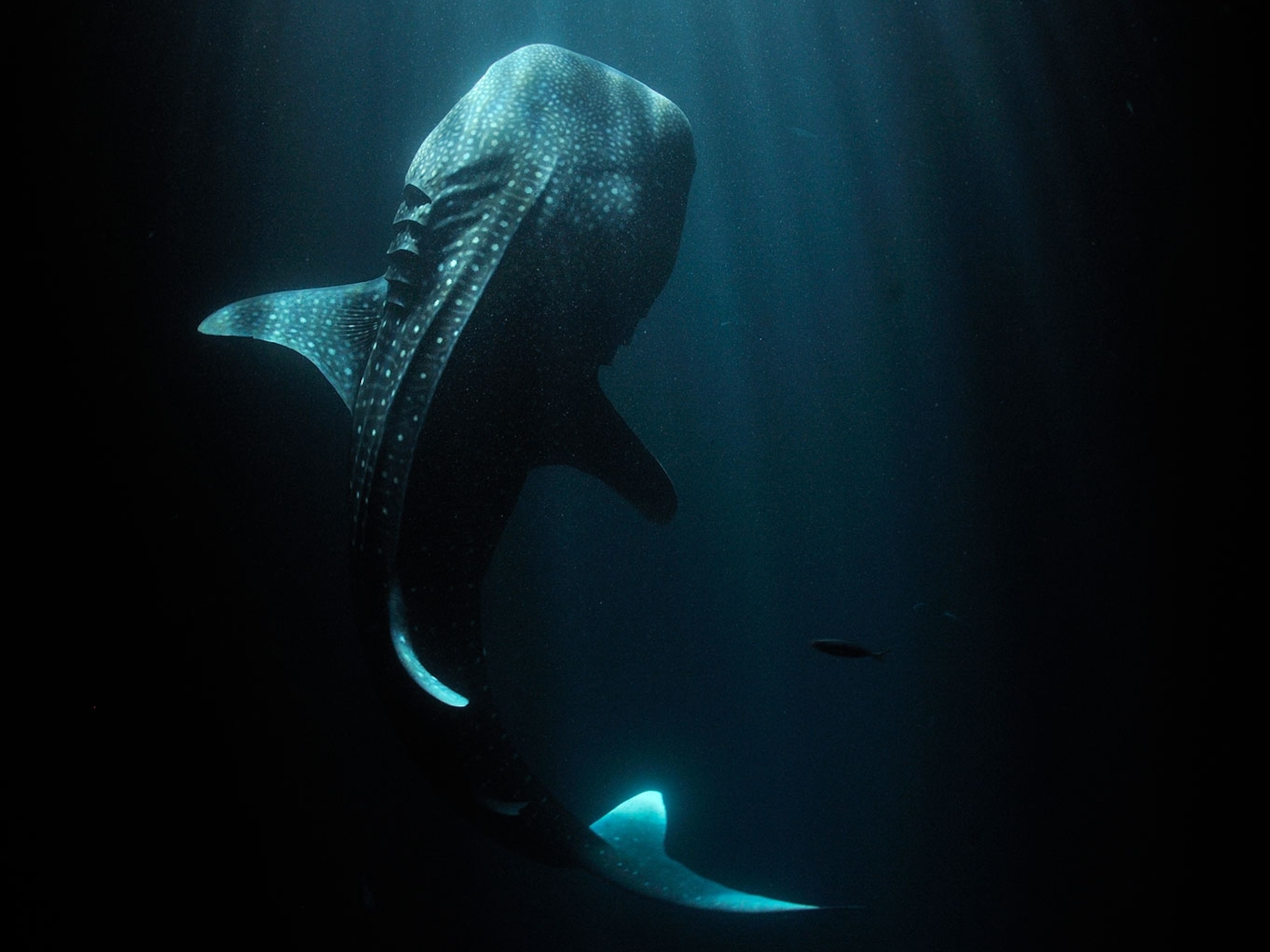Beautifully patterned with white spots and stripes, the 60-foot-long whale shark is the largest—and one of the most striking—fish in the sea. Though it’s beloved by ecotourists and native to temperate oceans the world over, very little is known about these behemoths—including how long they live.
Recent investigations into other shark species have revealed astounding life-spans: The Greenland shark, for example, can live nearly 300 years, longer than any other vertebrate on Earth. (Many more sharks, such as the great white, near the 100-year mark.)
Those discoveries are largely because of advanced methods for determining a shark’s age, such as tracing carbon-14, a rare type of radioactive isotope that is a byproduct of Cold War-era bomb detonations, in shark skeletons. Measuring amounts of this element can tell scientists a shark's age more accurately than the previous approach, counting tree-like growth rings on whale shark vertebrae. That's because how much time each ring represents has long been a subject of dispute.
Now, researchers using radiocarbon dating have identified the remains of a whale shark that lived 50 years, the most ever for that species, says study leader Mark Meekan, a fish biologist at the Australian Institute of Marine Science.
He adds that “it seems possible that these really big sharks could live to be about a hundred years old.”
Meekan says his study, published April 6 in the journal Frontiers in Marine Science, is crucial to the conservation of these endangered species. (Read how radiocarbon helps date ancient objects—but it’s not perfect.)
That’s because the whale shark’s longevity makes the species as a whole more vulnerable to threats such as legal and illegal fishing, warming ocean temperatures, and ship strikes.
Bomb analysis
From 1955 to 1963, atomic bomb testing in the United States and other countries doubled the amount of carbon-14 naturally in Earth’s atmosphere.
That excess was absorbed into the ocean and taken up by everything in the food web—including cartilaginous whale shark skeletons. (Learn how whale sharks move in mysterious ways.)
By comparing the amount of carbon-14 in the oceans during certain years with the amount of the isotope captured in successive vertebral growth bands, the researchers could discern a shark’s age.
“Basically what we showed is we have a time stamp within the vertebrae. We count the bands from there, and they appear to be annual,” Meekan says.
Meekan and colleagues took vertebral samples from two shark skeletons, one that had been caught legally in a Taiwanese fishery in 2005 that had 35 growth bands; and another from an animal that was stranded off Pakistan in 2012. That one had 50 growth bands. (Meet the animal that lives 11,000 years.)
Because the 50-year-old Pakistan shark was only 33 feet long, and the animals can grow to double that size, bigger whale sharks undoubtedly are older than the two tested, he says.
'Real data from real animals'
“This study is really important because it gets rid of some of those questions about the age and growth patterns of whale sharks,” says Taylor Chapple, a research scientist specializing in sharks at Oregon State University.
Conservationists need to know the growth rate of a species, he says, because a slower-growing species is more susceptible to extinction than one that reproduces quickly. The whale shark’s global population has fallen by more than half over the past 75 years, according to the International Union for Conservation of Nature.
Having “real data from real animals,” he says, “adds a really a critical piece of information to how we globally manage whale sharks,” for example by trying to minimize whale sharks caught accidentally while fishing other animals, which is known as bycatch. (Read more about sharks, the lords of the sea, in National Geographic magazine.)
Beyond being a vital part of the ocean ecosystem, whale sharks also support the ecotourism industry, which in many places offers opportunities to see or snorkel at a safe distance from the animals. In some locations, however, such as in Oslob, Philippines, shark-watching is controversial because of the practice of feeding or getting close to the animals.
“Ecotourism keeps a lot of people out of poverty in many developing countries around the world, in particular in Southeast Asia,” Meekan says.






